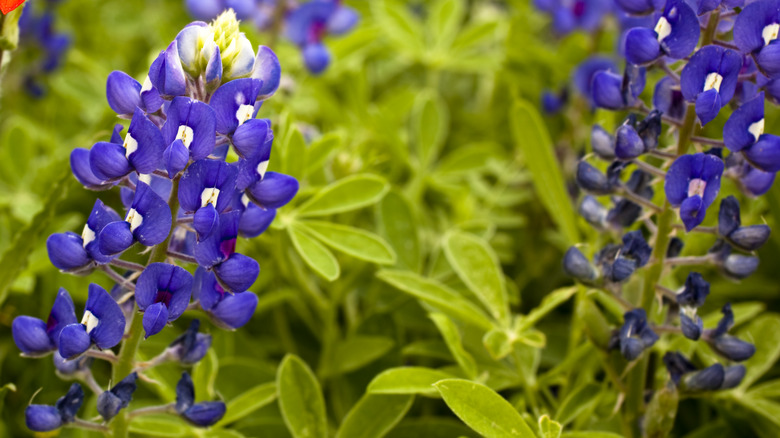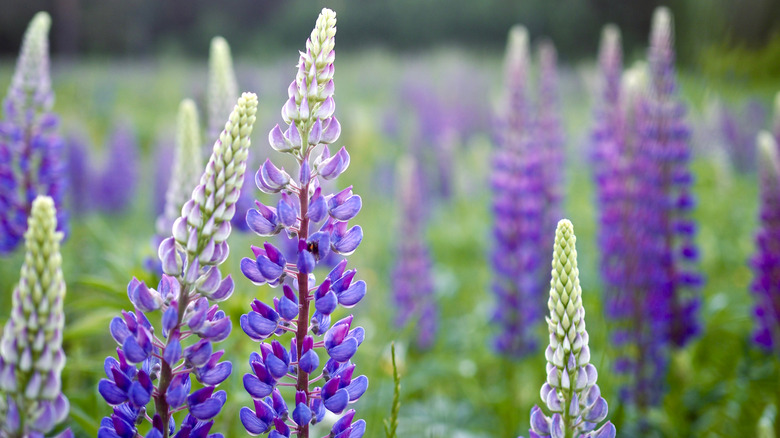When To Plant Bluebonnet Seeds For Stunning Vibrant Blooms
The stunning bluebonnet flower is synonymous with spring in Texas. Every year around March, the state is covered in beautiful fields of blue thanks to the native wildflower. Getting your own yard of bluebonnets requires a bit of planning ahead, as ideally, bluebonnet seeds should be sown in the fall to ensure a successful spring bloom. If your region is too cold to allow overwintering your bluebonnets outside, then they can be started indoors during winter.
Bluebonnets refer to several species in the Lupinus genus native to Texas. The most popular and iconic of these include the Texas bluebonnet (Lupinus texensis) and the Big Bend bluebonnet (Lupinus Havardii). In their native range, these plants are hardy annuals that grow slowly over winter and then bloom in spring. Unfortunately, they are only hardy to USDA zone 8, so growers in colder zones may need to start their seeds inside and transplant their bluebonnet seedlings when the weather is warm enough.
When and how to plant bluebonnets
Growers in zones 8 and up should sow their bluebonnet seeds in well-draining soil in an area that receives full sun. While the seeds and seedlings should be kept moist, the plants will become drought-tolerant once established. The seeds should be sown in autumn to ensure spring blooms. Unfortunately, as bluebonnets cannot survive temperatures under 10 degrees Fahrenheit, this method does not work in colder regions.
If you live in a colder zone, you can instead start your bluebonnet seeds inside. Bluebonnet seeds benefit from cold stratification, so putting the seeds in your refrigerator on a damp paper towel for several weeks should increase germination rates. Alternatively, you can attempt to scarify your seeds by carefully scratching or cutting the hard outer casing using a nail clipper. The seeds should then be planted in seed starting trays under lights about 8 weeks before your last frost. Once you have passed your last frost, you can harden off your plants and transplant them to a sunny spot.
Alternatives and companion plants for bluebonnets
While most bluebonnets are annuals, perennial lupines (Lupinus perennis) are native to much of America. These beautiful wildflowers are hardy in USDA zones 3 through 8. So, regardless of where you live in the continental United States, there's sure to be a lupine that's perfect for your zone. As members of the legume family (Fabaceae), lupines are also nitrogen fixers that can help improve your soil.
There are various ways to use bluebonnets and other lupines in your garden. Hummingbirds, butterflies, and other pollinators love the flowers, making bluebonnets perfect for butterfly gardens. As bluebonnets are relatively short and generally don't grow over 2 feet tall, they should be planted in the middle or front of these gardens so they aren't hidden behind taller plants. Alternatively, bluebonnets and other lupines can be paired with other wildflowers to create a stunning native meadow or a rambling cottage garden.


